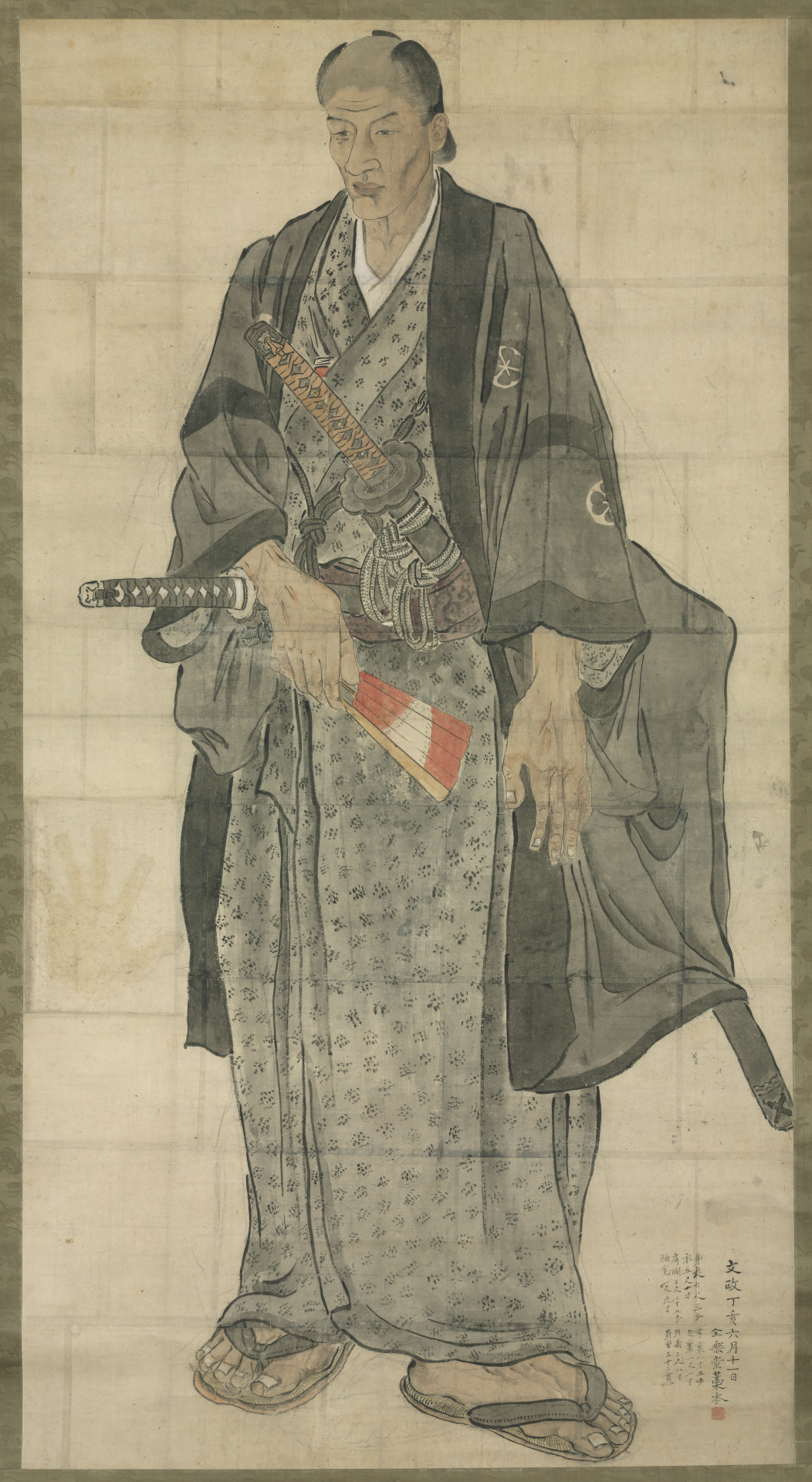
- Magazine Article
- Collection
Triumphant Returns
Treasured paintings on loan to Japanese museums and archaeological collections go back on display in Cleveland

In January a new display in the Kelvin and Eleanor Smith Foundation Japanese Art Galleries features Japanese paintings that have been off view since 2014, when they were included in the exhibition Admired from Afar at the Tokyo and Kyushu National Museums. In addition, highlights from the archaeological holdings will return to the galleries.
The selection of hanging scroll paintings includes the monumental study Portrait of Ozora Buzaemon by the late Edo period (1615–1868) portraitist Watanabe Kazan (1793–1841). The seven-foot-tall Buzaemon had traveled from his home in Kyushu to the capital of Edo (Tokyo) with the hopes of becoming a sumo wrestler. Despite his height, he was not a strong man; he eventually returned home with his ambitions unrealized. While in Edo, Buzaemon was the talk of the town, but for all the wrong reasons. He was treated like a freakish outcast and avoided appearing in public for fear of being stared at. However, depictions of him circulated widely through woodblock prints.
Kazan, who had a fascination with all things Western, used a device resembling a camera obscura to capture Buzaemon’s image at a gathering of intellectuals. In contrast to the sensationalist prints circulating at the time, Kazan’s portrait study captures Buzaemon’s sense of isolation and humiliation under the unwanted spotlight of the townspeople’s gaze.

A marvelous pair of six-panel folding screens, Irises, by Watanabe Shiko (1683–1755) marked a cutting-edge reenvisioning of The Tales of Ise that engages with the Eight Bridges (Yatsuhashi) theme. This Heian period (794–1185) narrative was a collection of Japanese waka poems embedded in a series of episodes about the travels of an exiled courtier from the capital Heian-kyo (Kyoto).
In the narrative, the courtier stops at Yatsuhashi, a place where a stream branches into eight channels, each of which has a bridge. Moved by the irises lining the channels, he composes a poem memorializing his forbidden love for a woman. The first syllable of each of the poem’s five lines is taken from the Japanese word for iris, kakitsubata. Traditionally, paintings in the album leaf or screen format based on this episode included both irises and at least a few bridges, each of which would often include eight planks. Shiko’s composition does away with the bridges altogether, and his irises are partially submerged in an abstract golden environment. Despite the irises being the only point of reference, their placement provides a sense of looking down upon the flowers as they emerge from layers of mist.
The Japanese archaeological collection has been off view since 2015, when renovations to the galleries began. Renowned archaeologist Miyao Toru, curator at the Niigata Prefectural Museum of History, has since visited the museum to examine many of the Neolithic items in storage. He was joined by members of the CMA’s curatorial and conservation teams to study the museum’s best-known Japanese archaeological piece: a cooking vessel with a signature fire-flame rim (kaen). Vessels like these were produced only in the Niigata area. Based on physical examination and X-rays, Miyao ascertained that this vessel, which dates to about 2500 BC, is possibly the best-preserved example of its type that he has encountered. Unlike many other examples, it retains a high percentage of its original materials.
He also solved one of the vessel’s long-standing mysteries. Fire-flame rim vessels were created in a number of sizes, the largest of which measure about 50 centimeters in height. The museum’s vessel, however, is more than 60 centimeters tall. Miyao determined that the bottom 10 centimeters were removed from another Neolithic vessel to reconstruct this piece. Cooking vessels like this were generally set into the ground during use, so their bases were vulnerable to deterioration. The vessel will be displayed along with other Neolithic works, Yayoi period (c. 300 BC–c. AD 300) jars, and Kofun period (c. AD 300–710) haniwa (clay cylinder) figures.

Cleveland Art, January/February 2019